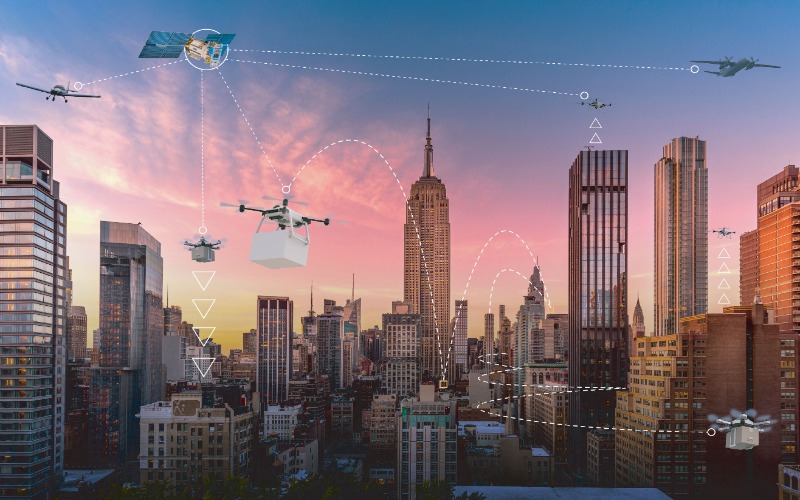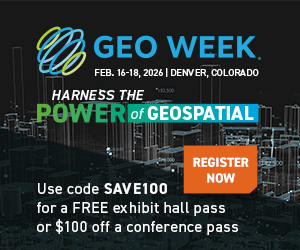Chances are, you’re carrying around a Global Navigation Satellite System (GNSS) receiver of some kind right now and have a few more at home or the office, on your phone, in your car, on your watch, tablet, and fitness tracker. We would all be – literally – lost without GNSS, and still, odds are you don’t know what it is. What’s behind the satellite technology that guides us through our lives – helps us find our rideshare, keeps farmers on the right path, and keeps construction workers safe? It’s all about precise positioning.
In a nutshell, GNSS is a collective term for Global Positioning Systems (GPS) and other satellite navigation systems, and it is embedded in our daily lives. From families driving on vacation to corporations coordinating complex logistics networks, hundreds of millions of users rely on GNSS for navigation and positioning every day. It’s essential for everything from finding unexploded ordnance in war-torn countries to improving golf course water management to getting picked up from the correct side of the airport terminal.
But what is it really, and how will its continued evolution change the future of our personal and professional lives?
Navigating From Space
GNSS is a radio navigation system that relies on satellites orbiting the Earth. The first GNSS satellite network was developed in the early 1970s by the U.S. Department of Defense for military and civilian use. Today, there are four global GNSS networks in the world, located in the United States, Russia, Europe, and China, and regional networks in places like India and Japan.
The United States’ GPS core constellation of 31 satellites travels in a 12-hour, circular orbit, 20,200 kilometers above the Earth. According to NASA, the satellites are positioned so that at least six should be observable nearly 100 percent of the time from any point on Earth.
On the ground, a GNSS system is essentially a smart sensor that includes a chip or “receiver” and an antenna. The antenna gets signals from satellites, which are then interpreted by a receiver to provide a location. This GNSS receiver can calculate how long it takes a signal to get from the satellite to the antenna. To make this calculation, the GNSS receiver must be able to ‘see’ four or more satellites simultaneously. It is important to remember that GNSS is a passive system, meaning that while we can use the satellites for positioning, the satellites are not capable of tracking how or where we are using those signals.
The Accuracy Advantage
GNSS is only useful if it’s accurate. We’ve all been lost on a hike or led down the wrong road in a big city by our mapping systems. This is frustrating but potentially significant and unsafe for workers in fields like construction, farming, and transportation.
The accuracy of every GNSS signal processing solution is measured by its ability to reduce errors that occur when signals are transmitted from space to Earth. The accuracy of the coordinates your GNSS-enabled device provides is directly affected by how quickly and directly the signal from satellites reaches your device’s antenna. For instance, you’ve likely noticed that the accuracy of your phone’s mapping system degrades while walking or driving in a city near tall buildings. That’s because the signal from space is bouncing off buildings on its way to the receiver, which is your phone in this instance.
The second, and arguably larger, cause of location errors is related to the ionosphere. If you remember your high school science class, the ionosphere is the electrically charged layer (ions) of the atmosphere located between 50 and 1000 km above the Earth. GNSS satellites are located in medium Earth orbit at about 20,000 km, which means the signals back to Earth are traveling through those highly charged ions. Since the ion strength varies continuously, the direct effect on the signals varies by time of day, season, geographic location, and solar activity.
You’ll likely hear more about ionospheric disruptions in the coming year as a consequence of Solar Cycle 25. This is a time when solar sunspot activity is highest, which directly affects GNSS signal reliability. For instance, in May, there was a significant solar storm. For many of us, the consequence of this storm was the visibility of the Northern Lights in places where it’s not typically seen. But it’s more than pretty lights in the sky – it’s a direct and noticeable disruption to GNSS.
Gnss in Your Pocket and Around the World
So how, exactly, are we using GNSS from day to day? The answer is, in ways that benefit us all, but most of us have never stopped to think about it. For instance, projects to improve roads, bridges, airports and other essential parts of modern society benefit from GNSS to improve productivity, and safety and deliver better quality, longer-lasting solutions.
Sundt Construction, a construction company in Idaho, is using GNSS to keep workers and motorists safe on a major interstate construction job site near Pocatello, where the company is working on the reconstruction of the I-86/I-15 system interchange. One of the biggest challenges of the project is maintaining traffic flow through the narrow work zones while keeping workers safe so close to moving traffic. GNSS helps by keeping workers off the ground and in machines, and by keeping those machines working in exactly the correct place on the project.
Farmers down the road and around the world use GNSS to properly place their seeds, steer their machines, apply fertilizer, herbicides, and pesticides with precision, and manage overall soil health and water usage. This helps farmers work better and faster and also helps reduce the environmental impact with fewer crop inputs, less water and waste, and more precise application of chemicals.
GNSS is in use on the roads and highways we travel every day. Trimble technology that helps ensure positioning accuracy, for example, has been used to help maintain in-lane positioning for more than 240 million miles of hands-free driving in GM Super Cruise vehicles. In Baltimore, Maryland, GNSS helped reroute trucks after the Francis Scott Key bridge collapse, and in some countries, precise positioning is used for proof of package delivery on doorsteps and front porches every day.
It’s also likely that you’ve seen GNSS at work in field robotics – a fast-growing segment that requires precise positioning – for example, in the use of autonomous lawnmowers for commercial use, or for the delivery of food, goods, and products via drone.
Driving the Future
Advancements in GNSS technology are continuing to drive improved accuracy at a lower price point, which will continue to make it better in challenging environments and applicable to even more day-to-day applications. We’re also seeing GNSS modules evolve to become smaller and smaller, so they fit in even more devices – like fitness trackers, watches, and drones.
Over the past 50 years, GNSS has gone from having a few hundred mostly military users to most people owning multiple GNSS-enabled devices and automobiles with an accuracy of less than 10 centimeters almost anywhere on the planet. What will the next 50 years bring? It’s hard to tell without a crystal ball, but we do know this: it will get us there with precision.











